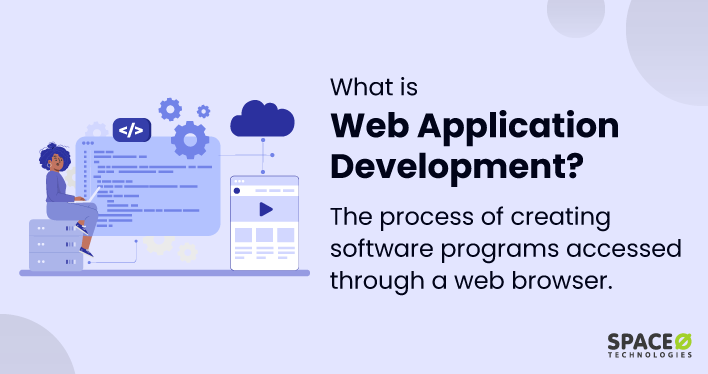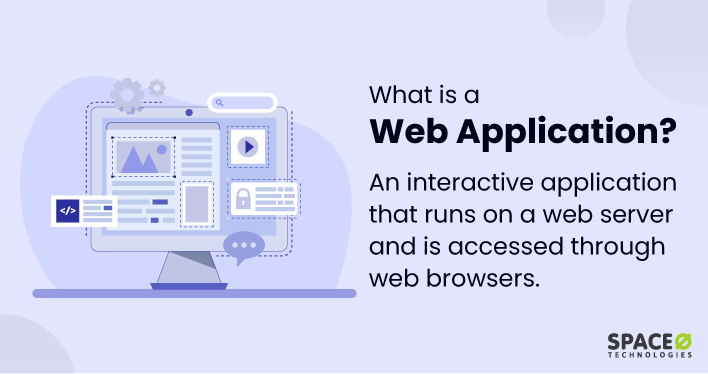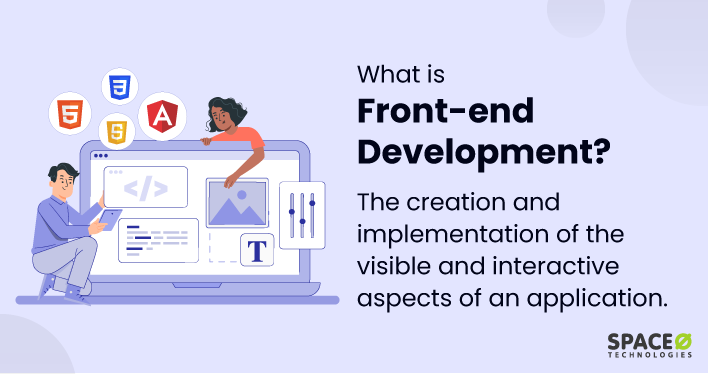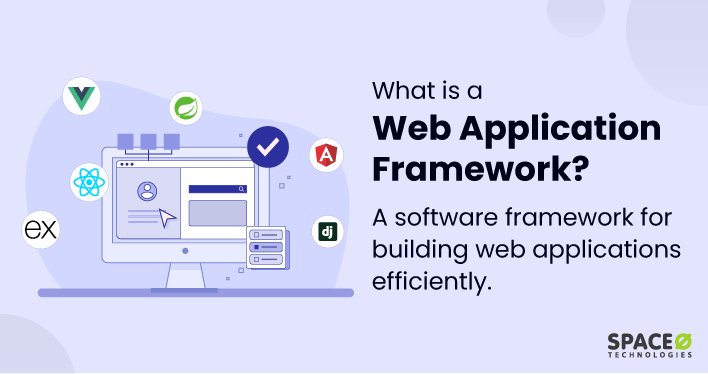Table of Contents
What is Web Application Development?
Web application development is the process of designing, building, and managing custom web applications that work within web browsers. These applications are easily accessible through the internet or a private network (intranet) on a variety of devices, such as computers, smartphones, and tablets, without needing to install any additional software.
If you are interested in knowing the process to build a web application, we have a dedicated guide to create a web application that walks you through every step. It covers everything from the initial planning phase, through the design and development stages, all the way to deployment and maintenance.
Web applications can range from simple applications like email clients and to-do lists, to complex systems such as online marketplaces and enterprise software solutions. Consider a web application for email service like Gmail for example. Users can access Gmail through their browsers, compose and read emails, and manage their inboxes without needing to install any software on their devices.
However, if you are looking for more information on a web application, or web app, is a client-server computer program that runs in a web browser. If you’re curious to learn more about web applications, read this article on what is a web application.
There are several types of web applications, each with unique functionalities and use cases.
Below, we have listed the top 7 types of web applications along with their description, the programming language required, and examples. Let’s have a look.
| Type of Web Applications | Description | Programming languages | Examples |
|---|---|---|---|
| Static web application | Static web apps display fixed content to all users with minimal interactivity | HTML, CSS, JavaScript | Company websites, personal blogs, portfolios, informational sites |
| Dynamic web application | Dynamic web apps display customized content based on user interactions and preferences | PHP, Python, Ruby, Node.js | Social media platforms, online forums, news websites |
| Single-page applications | Load a single HTML web page with dynamic content updates as users interact | Angular, React, Vue.js | Gmail, Google Maps, Trello, Asana, LinkedIn |
| Progressive web applications | Progressive web apps provide a native app-like experience on mobile devices, with internet browser-based access | HTML, CSS, JavaScript, Web APIs | Twitter, Pinterest, Starbucks, AliExpress, Tinder |
| Content management system | Allow users to create, edit, and manage digital content without extensive technical knowledge | PHP, Python, Ruby, Node.js, Java | WordPress, Joomla, Drupal, Magento, Wix |
| E-commerce applications | Enable users to buy and sell products or services online | PHP, Python, Ruby, Node.js, Java | Amazon, eBay, Etsy, Alibaba |
| Web portals | Portal web apps provide centralized access to various resources, services, and information | PHP, Python, Ruby, Node.js, Java | Yahoo!, MSN, company intranets, government portals, online banking |
You can learn more about different types of web apps by going through our post on web app examples.
Now, you might be wondering, what is a web application framework? Simply put, a web application framework is a software framework designed to support and simplify the development of web applications. They provide a standard way to build and deploy web applications and are a universal feature of the web development landscape.
Understanding web application frameworks is integral to mastering web application development. To learn more about what a web application framework is and how they function, you can read our detailed guide on what is a web application framework.
Now that you’re familiar with different types of web applications and have been introduced to the concept of web application frameworks, let’s understand some of the most popular front-end and back-end frameworks used in the industry today.
| 5 Front-end Frameworks | Description | Key Features | Examples |
|---|---|---|---|
| Angular | A comprehensive TypeScript-based, open-source web application platform developed by Google, ideal for building complex, large-scale apps |
|
|
| React | A popular, flexible JavaScript library created by Facebook for building responsive, high-performance user interfaces |
|
|
| Vue.js | A progressive, adaptable JavaScript framework that emphasizes simplicity and is easy to learn and integrate with other projects |
|
|
| Ember.js | A highly structured JavaScript framework focused on conventions and productivity, suitable for ambitious, large-scale web applications |
|
|
| Backbone.js | A lightweight, minimalist JavaScript library that provides structure to web applications using an MVC architecture and RESTful JSON API |
|
|
Now, let’s even understand the top 5 back-end frameworks.
| 5 Back-end Frameworks | Description | Key Features | Examples |
|---|---|---|---|
| Express.js | A fast, unopinionated, minimalist web framework for Node.js, making it easy to build scalable and maintainable web applications |
|
|
| Django | A high-level Python web framework that encourages rapid development and clean, pragmatic design, ideal for data-driven applications |
|
|
| Ruby on Rails | A full-stack web application framework built with Ruby, emphasizing convention over configuration and DRY (Don’t Repeat Yourself) principles |
|
|
| Flask | A lightweight, extensible Python web framework, offering a modular design and flexibility for small to mid-sized applications |
|
|
| Spring Boot | A Java-based framework simplifying the development of stand-alone, production-grade Spring-based applications with minimal configuration |
|
|
Now, you know about web app frameworks, let’s even understand benefits of developing web application.
8 Benefits of Web Application Development
Here are the top 8 benefits of developing web applications.
Reaches More Users with One Codebase
Web application is accessible on a various user’s device and operating system, eliminating the need to create and maintain multiple versions of the same application. This saves time and resources for both developers and businesses.
Connect with Users Anywhere, Anytime
Web apps can be accessed from anywhere with an internet connection, offering flexibility and convenience for users, and increasing the potential reach and customer base for businesses.
Adapt to Changing Traffic and Business Needs
Web applications can be easily scaled up or down to accommodate fluctuations in user traffic or business requirements, ensuring optimal performance and resource usage for developers and businesses.
Launch Your Product or Service Faster
Web app development typically involves shorter development cycles, enabling developers to create and deploy applications more quickly, and allowing businesses to respond more quickly to market demands and user feedback.
Protect Your Data and Ensure Compliance
Modern web development frameworks and tools come with built-in security features, helping web app developers protect sensitive data and comply with industry standards while providing businesses with a secure platform for their users.
Save Time and Resources
Developing and maintaining web apps is generally more cost-effective compared to creating separate applications for different platforms, benefiting both developers and businesses in terms of time and money saved.
Keep Your Web App Up-to-date Effortlessly
Updates to web apps can be deployed quickly and easily, as users don’t need to manually update the software on their devices. This simplifies maintenance for developers and ensures businesses can provide their users with the latest features and improvements.
Extensive Developer Community and Resources
The web development community is vast and active, offering a wealth of resources, tutorials, and support for developers to learn, collaborate, and troubleshoot problems, ultimately benefiting businesses by ensuring well-supported and evolving web technologies.
Till here, you know the benefits of web application development, let’s quickly go through the practices you need to follow for web app development.
5 Best Practices for Web App Development
Here are the top 5 best practices you need to follow before starting with web application development
- Plan and document your project thoroughly before starting the web application development process.
- Use version control to keep track of changes made to your codebase, such as using Git or SVN. For example, creating different branches for different features or bug fixes to keep the codebase organized.
- Optimize your code for performance to provide a better user experience.
- Ensure security by implementing security best practices, such as using SSL encryption and validating user input to prevent common attacks like SQL injection and XSS. For example, using two-factor authentication to protect user accounts.
- Document your code to help other developers understand your code and make updates as necessary, such as using code documentation tools like JSDoc or Doxygen. For example, creating a README file that outlines the project structure and how to run the app.
Web application development involves designing, building, and managing custom applications that are accessible through web browsers. It offers numerous benefits, such as reaching a wider user base, connecting with users anywhere and anytime, and adapting to changing business needs. By following best practices and leveraging the available web development frameworks, you can create scalable, secure, and efficient web applications that deliver exceptional user experiences.






